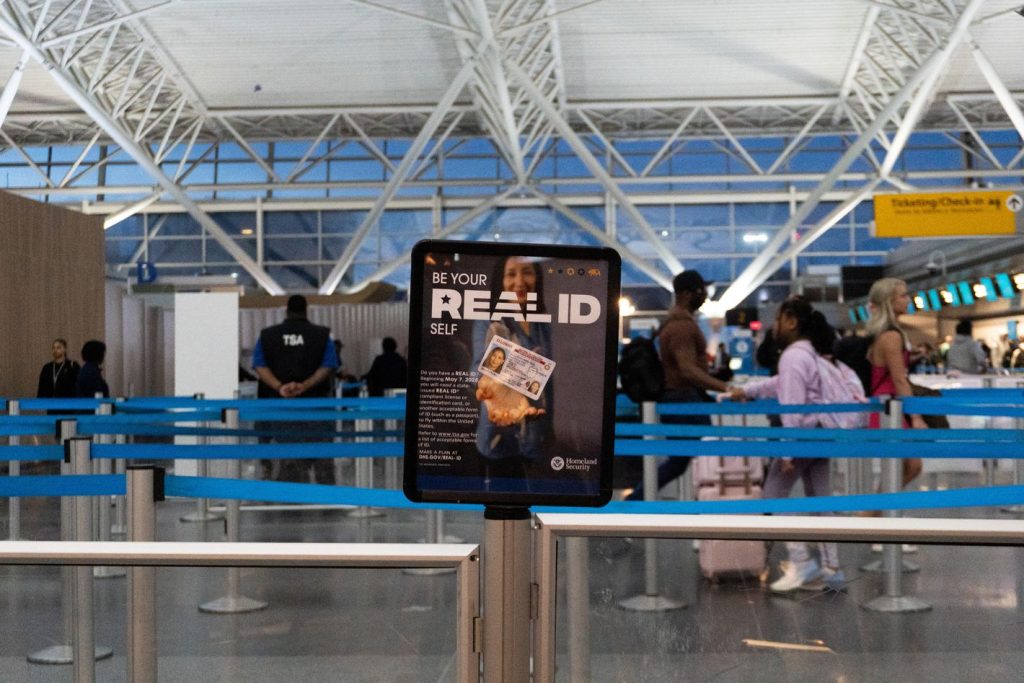Kylie Cooper/Reuters
Over the past few weeks, countless Americans made a last-minute dash to their local DMV to obtain an official Real ID ahead of the looming May 7 enforcement deadline. Government officials warned that the new standardized license and personal ID or a passport will be required to enter governmental facilities or to board a domestic airline flight and that latecomers risk disruptions to their travel plans.
But as the long-delayed rule finally went into effect on Wednesday, the repercussions were far less dramatic than advertised. Initial reports from the first travelers in the Real ID era indicate that passengers lacking the ID will likely be let off with a warning to obtain a new one. A Newsday reporter found that travelers at La Guardia airport are being given a flyer informing them that their presented identification doesn’t comply with the new rules but are seemingly not being subjected to additional security screenings:
At LaGuardia Airport, lacking a REAL ID yields a leaflet and an admonition to go get one soon but no additional security screening. pic.twitter.com/JdFqnWlMOW
— Matthew Chayes (@chayesmatthew) May 7, 2025
There were similar reports from airports in Los Angeles and Minneapolis with travelers making it through security despite their noncompliant identification. The Transportation Security Administration, or TSA, confirmed on social media that passengers without an acceptable form of ID will be “notified” of their noncompliance and they “may be directed to a separate area and may receive additional screening.”
If you have a non-compliant state ID or driver’s license and do not have another acceptable form of ID, you’ll be notified of your noncompliance (see photo below), and you may be directed to a separate area and may receive additional screening. pic.twitter.com/7sGfhVnawy
— TSA (@TSA) May 7, 2025
Delays have become a hallmark of the Real ID law. The legislation requiring standardized identification cards across states and U.S. territories was first signed into law in 2005 following a recommendation from the 9/11 Commission. But its implementation was consistently delayed over the course of two decades as leaders in numerous states opposed the new requirement over privacy concerns.
Under the new regulation, travelers will need an acceptable form of identification to fly domestically. In addition to a Real ID, passengers can also show their passport or passport card, a DHS-trusted traveler card like Global Entry, as well what’s known as an Enhanced ID or driver’s license, cards offered in five states that allow its holder to travel into Canada, Mexico, or the Caribbean via land or sea.

